Late Gothic Italy
1/16
There's no tags or description
Looks like no tags are added yet.
Name | Mastery | Learn | Test | Matching | Spaced |
|---|
No study sessions yet.
17 Terms
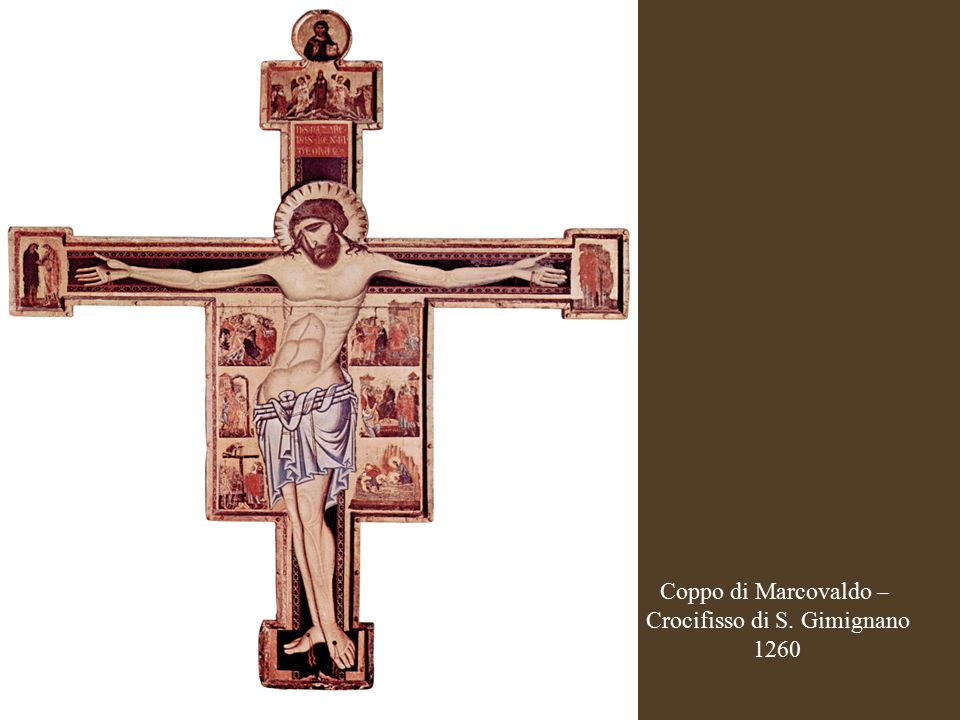
Coppo di Marcovaldo , “Christus Patiens",” San Gimignano, Italy, 1250-1270 Late Gothic Italy
-Emphasis on death that wasn’t seen before
-Sag/gravity on the body
-Head downturned

Bonaventura Berlinghieri, St. Francis Altarpiece, Pescia, Italy, 1235, Late Gothic Italy
-Francis of Assisi → Important Saint
-Byzantine way of painting: flat, abstracted, sylized, looks like he’s floating

Virgin and Child Enthroned by Cimabue, 1280, Late Gothic Italy
-Scene setting
-Spatial ambiguities
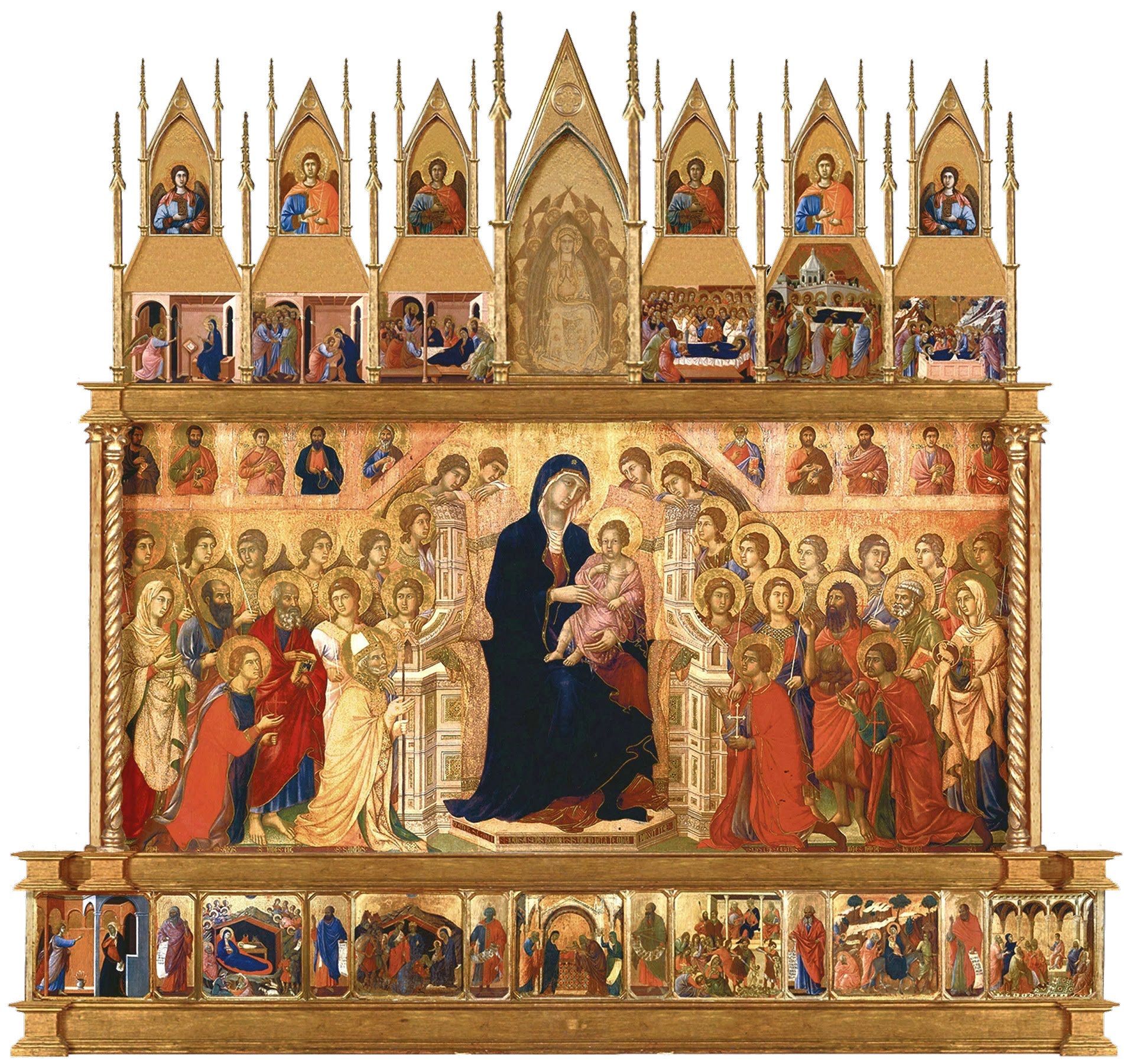
Maesta Alterpiece by DUCCIO di Buoninsegna, 1308-11, Late Gothic Italy
-Hierarchy of scale
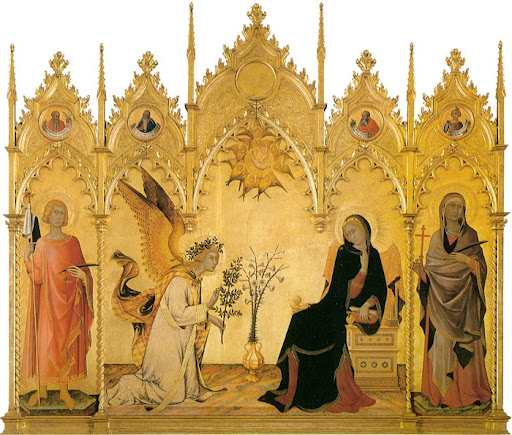
Annunciation Alterpiece by Simone MARTINI, (with Lippo Memmi), 1333, Late Gothic Italy
-Fabric flowing is more realisitc
-Trying to show perspective of the eyes
-Attempt at realistic faces
-Mary has a very realistics and emotional face
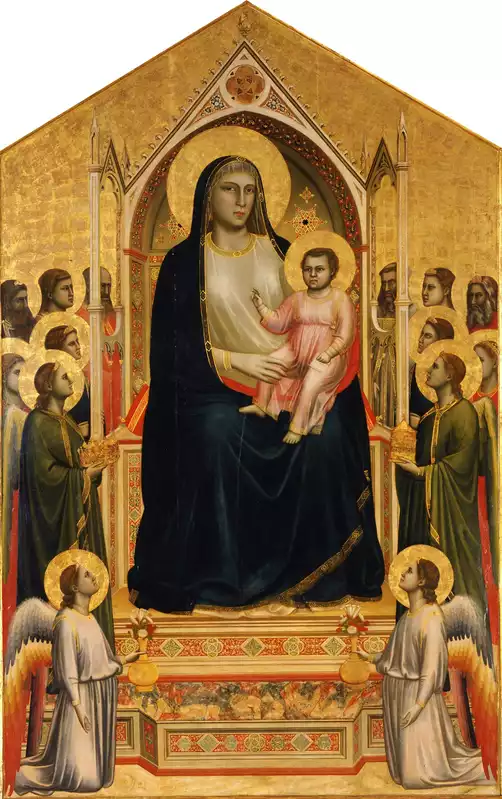
Virgin and Child Enthroned by GIOTTO, 1305-1310
-3/4 perspective face figured out
-Cloth is realistic
-Depth of architecture done in a convincing perpective
-Angels to the side are different profies → receiding into space
-Halos are innovative and layered
-Like beginning of renissance, faces, drapery, background angels are detailed.
-Still hierarchy of scale
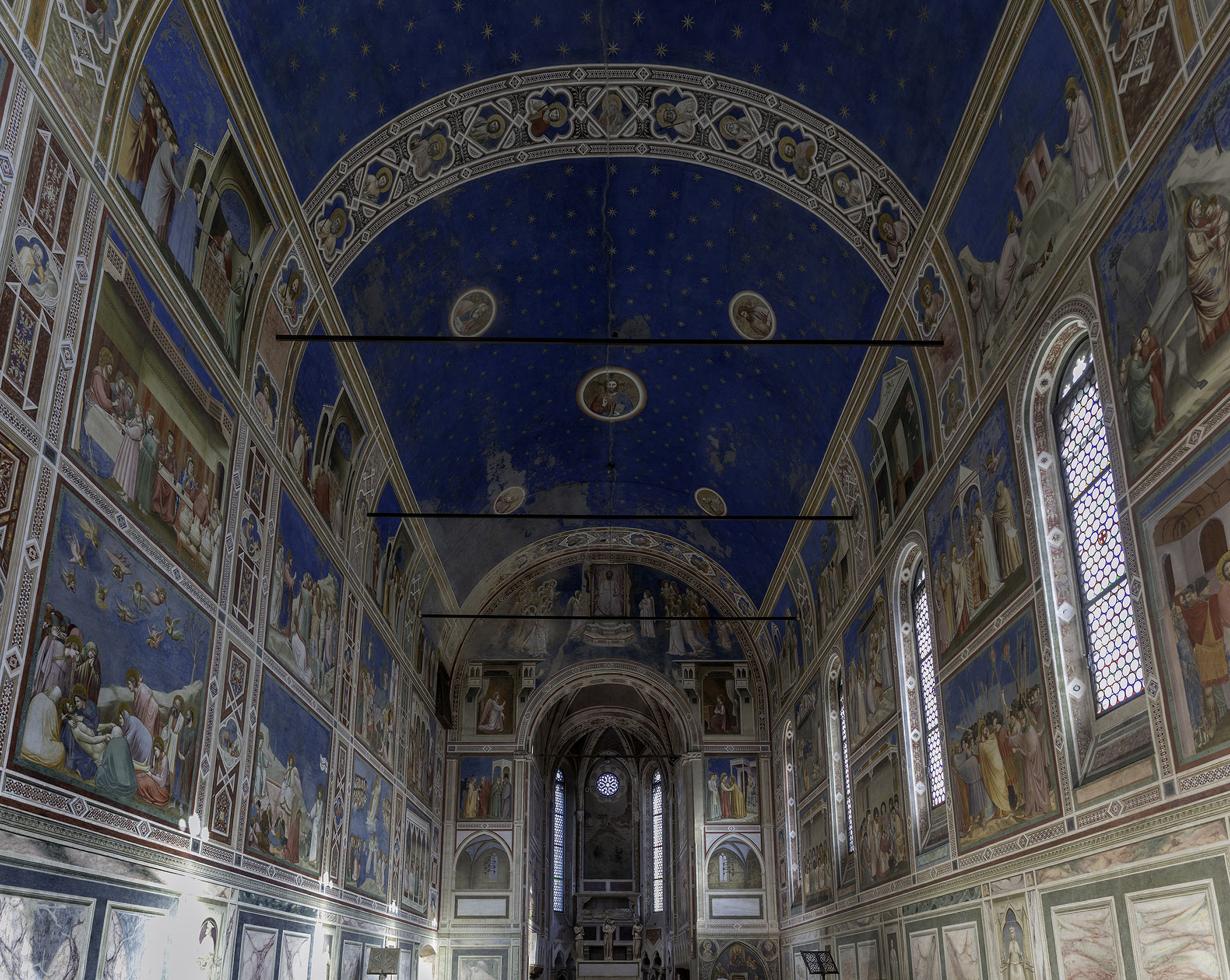
Scrovengi (Arena) Chapel, frescos by GIOTTO, Padua, Italy, 1305-1306, Late Gothic Italy
-Built on the site of a roman ampitheater
-Scrovengi comissioned chapel to attone for sin of usery (interest rates on loans), and got pardoned for his sins by the pope after he built the church.
References to this all over the chapel: Judas accepting money for selling out christ
-Annunciation Scene: painted architectural settings add 3D depth.
-Judgement Day: Scrovengi with his chapel on the good side.
-Personifications of virtues and vices:
Envy
Hope: very classicalFaith: depicted as a woman
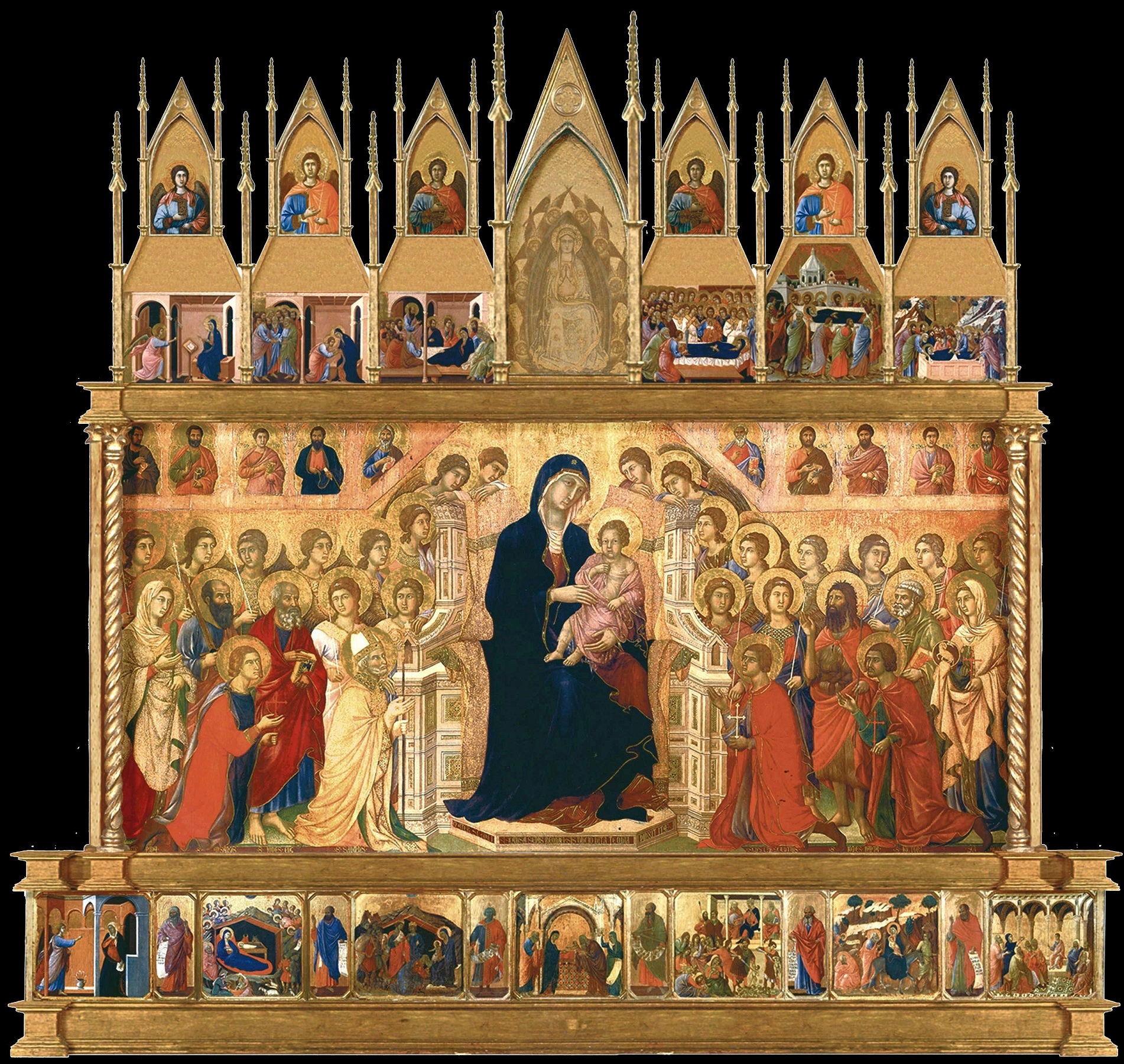
Maesta Altarpiece by DUCCIO, 1308-11, Late Gothic Italy
-Kiss of Judas: very dramatic, back turned to the viewer, background realistic for setting the scene.
-The Lamentation: impressive emotional depth, epression in body positon and faces, angels blending in with the sky showing dynamics/movement, people’s backs turned add to story, clear perspective, not medieval→ GIOTTO was very innovative
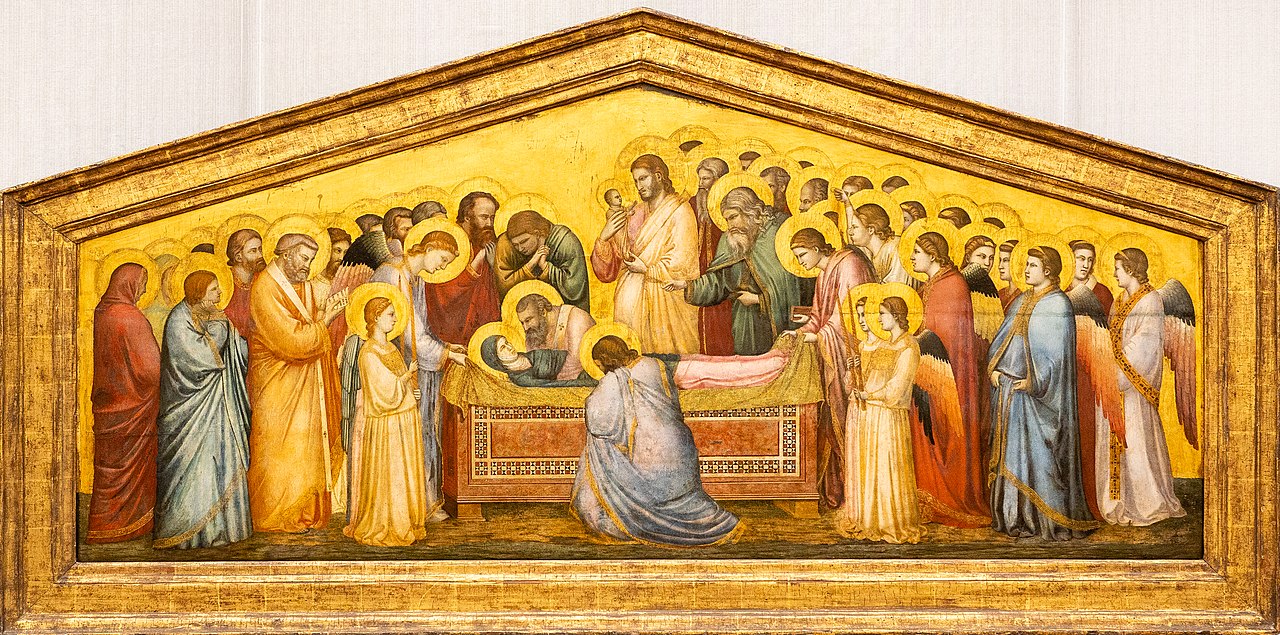
Entombment of Mary by GIOTTO, 1310, Late Gothic Italy
-Mary’s death being welcomed to heaven
-Emotional expressive dramatic
-Side conversations, makes it realistic like the art is capturing a moment in time
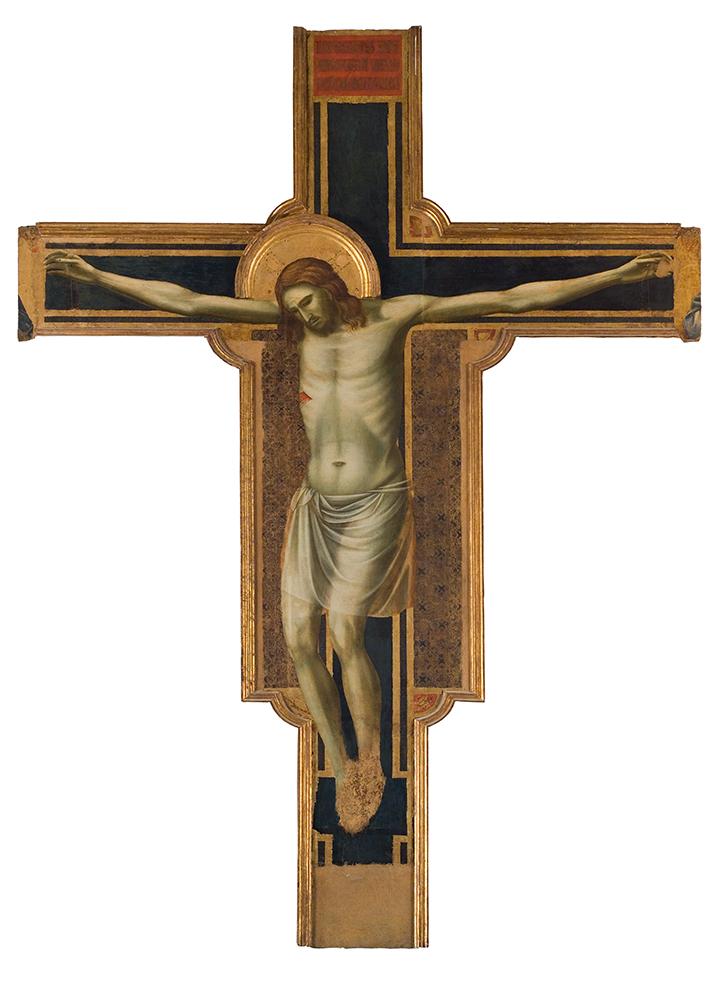
Crucifix by GIOTTO, Rimini Italy, Before 1309, Late Gothic Italy
-Dimension→ 3D and realisitc
-More weight/pull of gravity
-Christ’s halo moves with him, adding to the drama
-Cloth folds→ See through, transparent
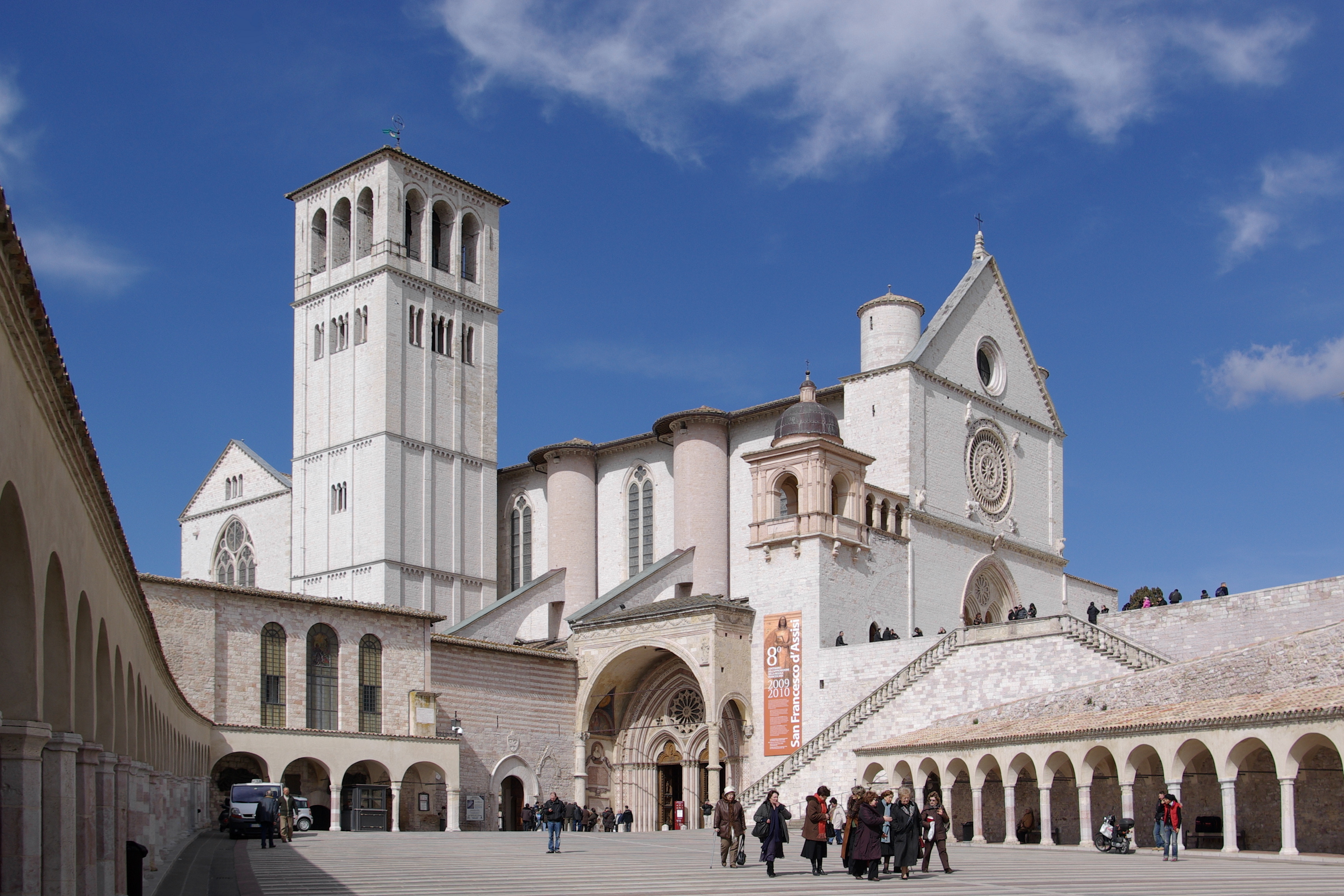
Basilica of St. Francis, Assisi, Italy, 1253, Late Gothic Italy
-Dedicated to Francis of Assisi: was a wealthy person, but saw beggers and decided to give up all worldy commforts and possesions and become a monk.
-Upper and lowe basilica: lower more romanesque than upper because it was built first
-Brought in a bunch of famous artists to make frescos for the inside.

Palazzo Pubblico, Siena Italy, Late Gothic Italy
-Town Government: Council of 9, afraid of corruption → Men got replaced very quickly
-Has many frescos inside that remind the council not to be corrupt and be good
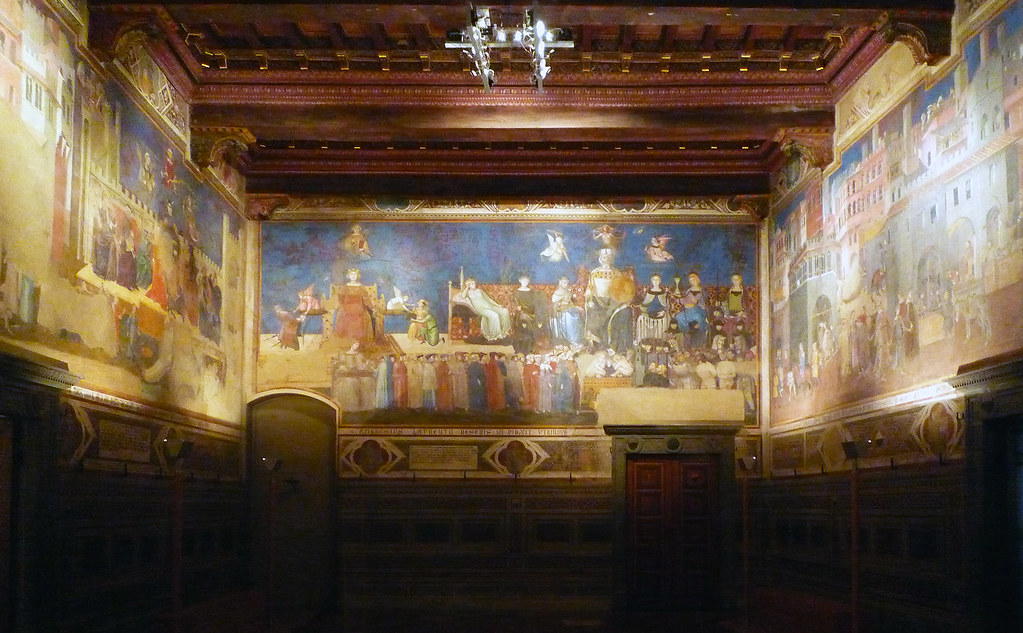
Sala dei Nove, Palazzo Pubblico Siena, Frescos by Ambrogio Lorenzetti, Late Gothic Italy
-Walls show the effects of good and bad government on the town and country
-Allegory of Good Government: buildings, infrusructure, commerce, dancing, signing, grain, etc.
-Good Government Country: movement in and out of city, trade
-Bad on Town: personification of the tyrant, vain, glory, greed, cruelty, justice wrapped up/powerless, empty shops
-On country: War, invasion, fire

Front Cloth for an Alter by Jacopo de Cambio, Church of Santa Maria Novella, Florence, 1336, Late Gothic, Italy
-One of the only textiles from 14th century Italy to survice
-Only used for special occasions
-Florence center of embroidery → Not much survives today
-Direct influence from painting into embroidery: amazing technique especially with the shading in embroidery.
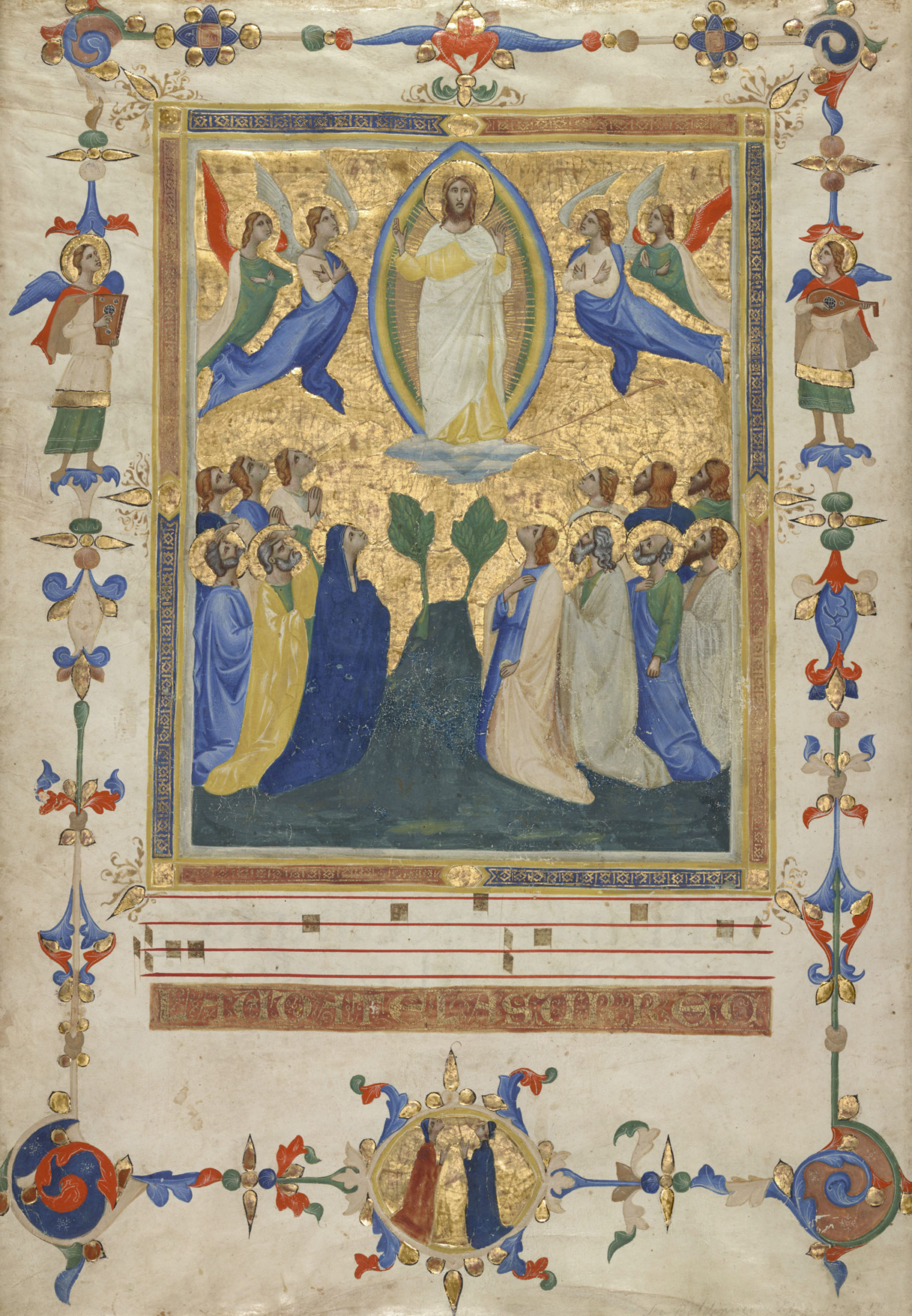
Ascension of Christ from the Laudario fo Sant’Agnese, 1340, Late Gothic Italy
-Book of songs of praise to Saint Agnese
-Club of patrons pooled money together to commission it.
-Alot of books like these were torn apart, sold to collectors by page or scene, so they are either destroyed bebecause they weren’t stored altogether, or they are still split up and must be put together.
Not everyone could afford the full book
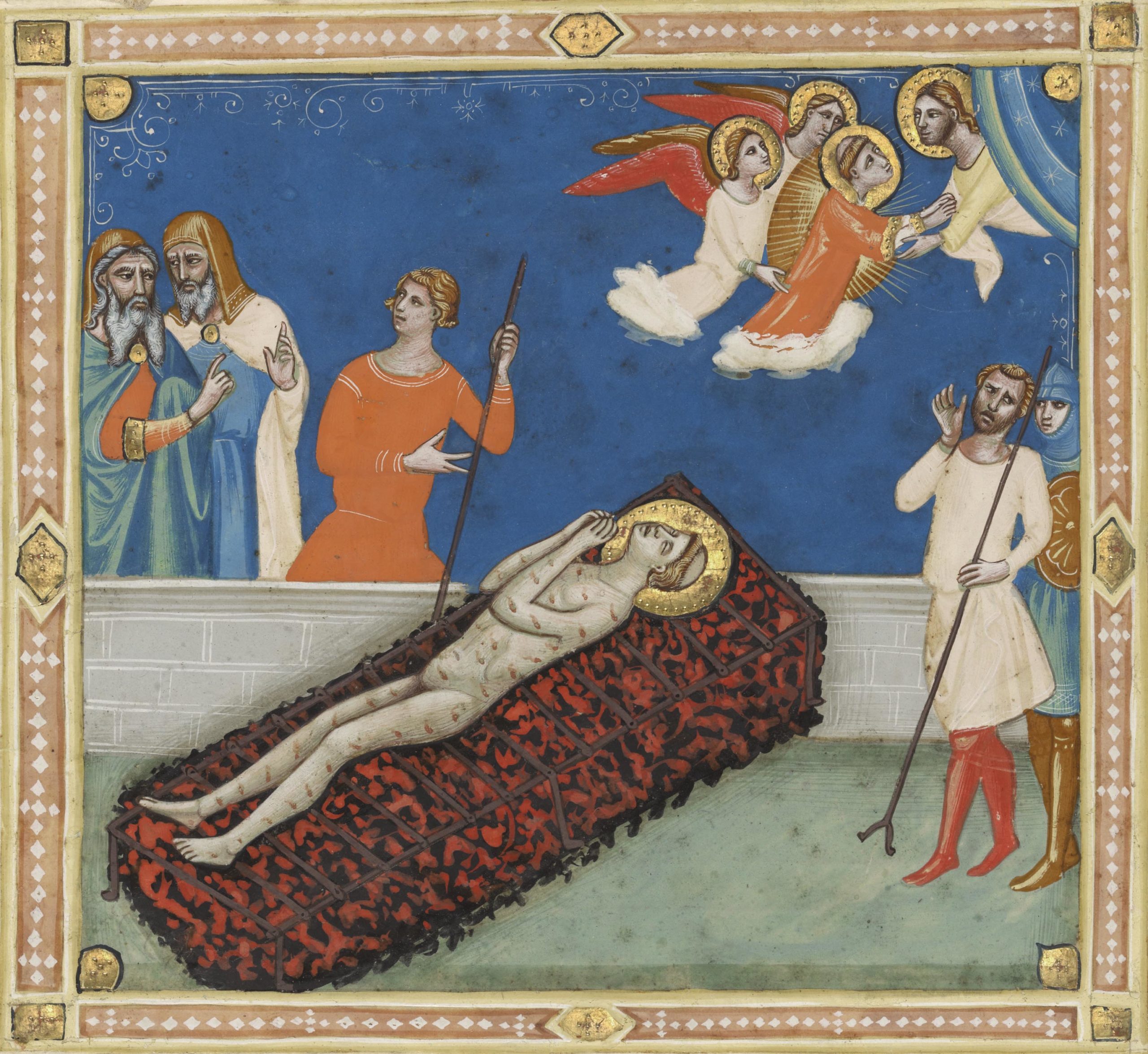
Martyrdom of St. Lawrence in Laudario of Sant’Agnese, 1340, Late Gothic Italy
-Scene ripped from the book
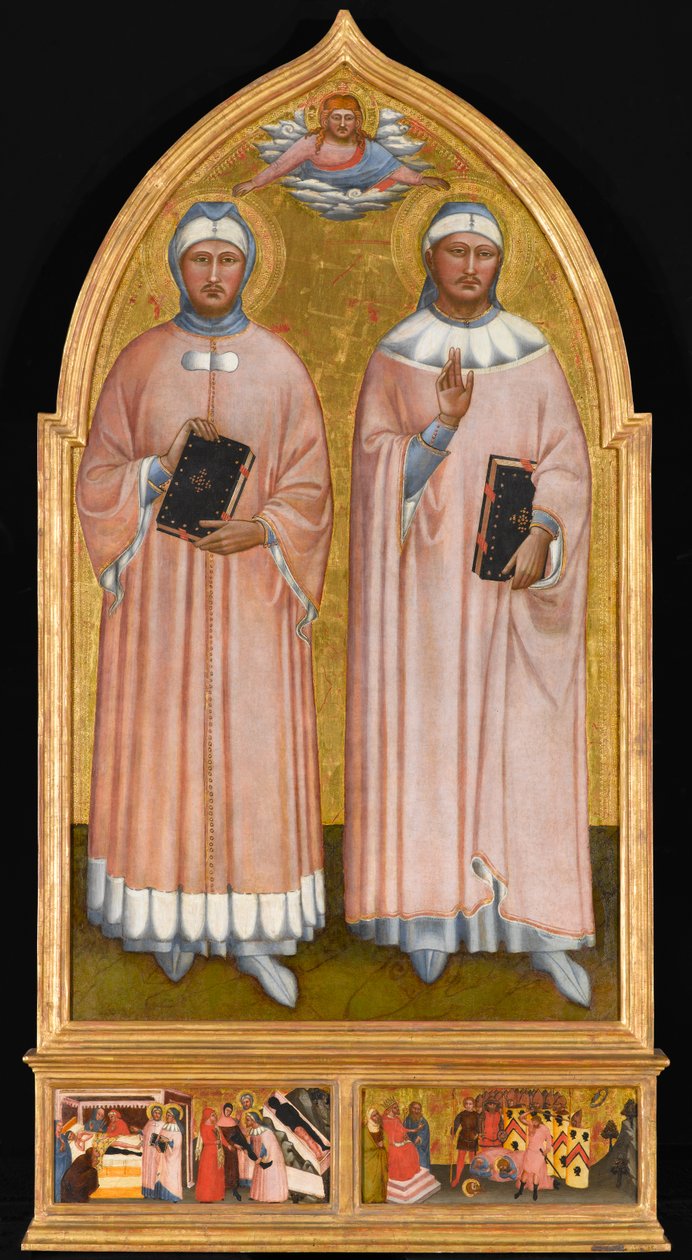
Master of Rinuccini Chapel, Altarpiece of Sts. Cosmas and Damian, 1370-75, Late Gothic Italy
-Twin Sts. from late roman period → doctors were martyrs, had their heads chopped off
-Miracle of Black Leg: Transplanted leg of a dead (black) man onto that of an alive white man
Interesting perspective of race from that time